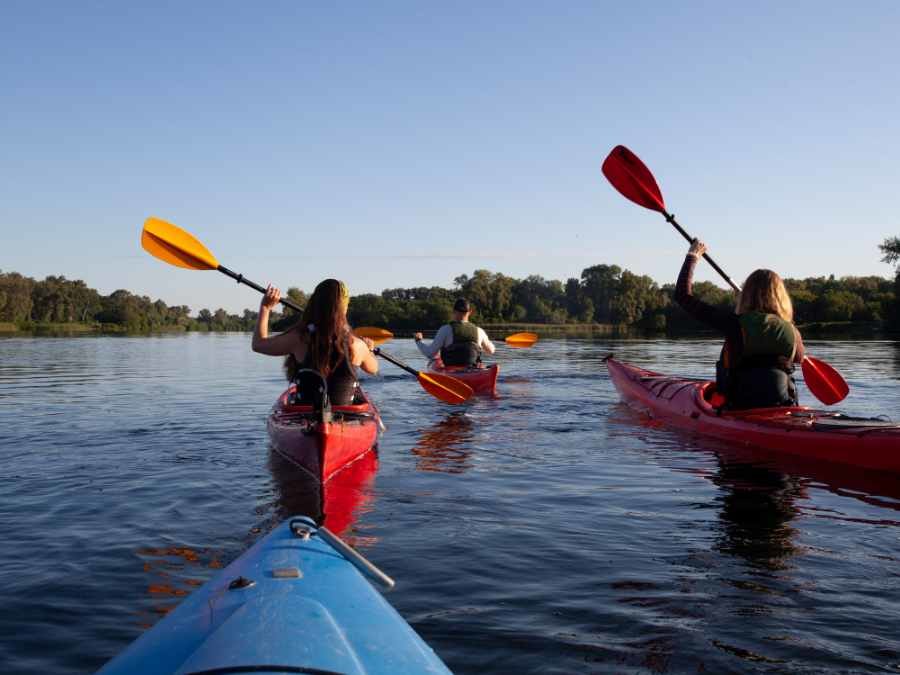
The ecosystems of the South Carolina coast are some of the richest and most diverse in the eastern United States. Tidal zones, wetland forests, and both freshwater and saltwater marshes each offer unique habitats on and around Hilton Head Island.
This wide-ranging complex of ecosystems makes the Lowcountry a particularly great place to observe a wide range of flora and fauna. And there may be no better way to go wildlife watching in Hilton Head than aboard a kayak.
See Wildlife In The Lowcountry
Saltwater marshes are some of the most common habitats you’ll encounter on the South Carolina coast. Local islands, lagoons, and tidal creeks support not only abundant marine life, but also birds, reptiles, and land mammals.
Kayaking grants you access to coastal areas that most people rarely, if ever, get to see. Read on to learn more about some of the most often-seen wild creatures that make their home on Hilton Head Island while kayaking.

Dolphins
One of the animals most visitors want to see on Hilton Head is the bottlenose dolphin. Luckily, pods of these friendly, intelligent, marine mammals are commonly spotted along the coast.
Dolphins inhabit the Hilton Head area year-round, but are most commonly encountered in early summer, when they travel into the shallow, rapidly-warming waters to feed. A resident population of some 200 dolphins lives in the Hilton Head area throughout the year, but many more are known to migrate through the area seasonally.
Dolphins typically travel in pods containing up to a dozen members, and are known for swimming right up to kayakers to say hi! Just remember that feeding dolphins in South Carolina is against the law, and comes with a hefty fine.

Alligators
Feared by some, fascinating to many, American alligators are fairly common along the coast of South Carolina. If you fall into the former category, rest assured that alligators are mostly harmless, and unless you directly antagonize one, the odds of being attacked by a gator are virtually zero.
For the most part, alligators are seen sunning themselves on the banks of Hilton Head’s lakes and lagoons. They’re most frequently seen in spring and fall; during summer they generally retreat to cool waters, and they spend much of the winter months in their mud dens.
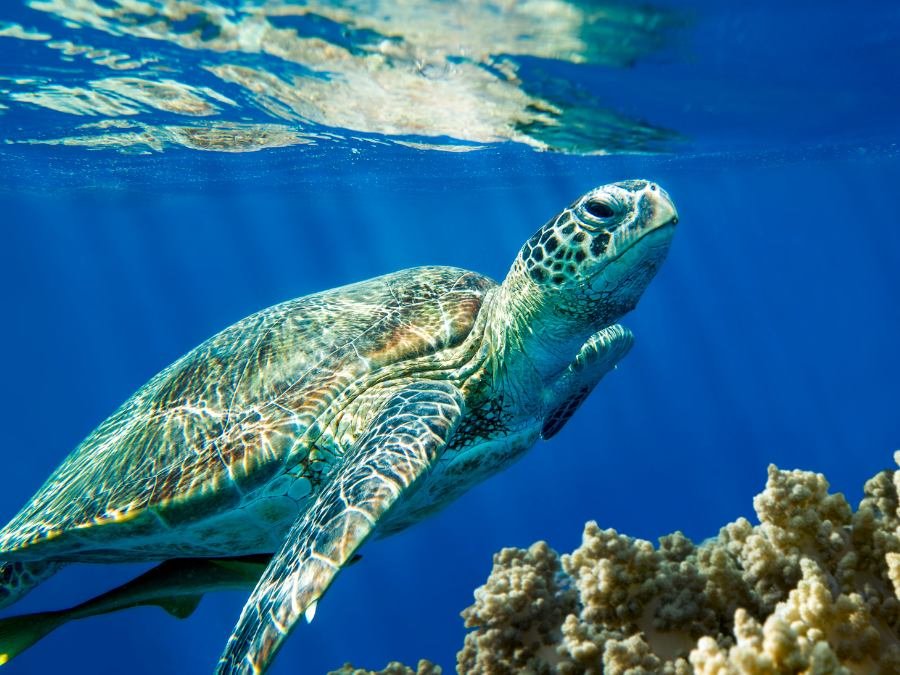
Loggerhead Turtles
The 12 miles of coastline surrounding Hilton head Island are a major nesting ground for endangered loggerhead sea turtles. These gentle giants are capable of reaching 400 pounds and living for over 100 years. Though they’re not often seen, they always inspire awe when one is spotted.
If you do see a sea turtle, always maintain a respectful distance. Loggerhead turtles lay their eggs on the island after dark, and during the nesting and hatching season (from May to October) houses and buildings near the beach turn off their outdoor lights to avoid interfering with the young hatchlings’ journey back to the surf.
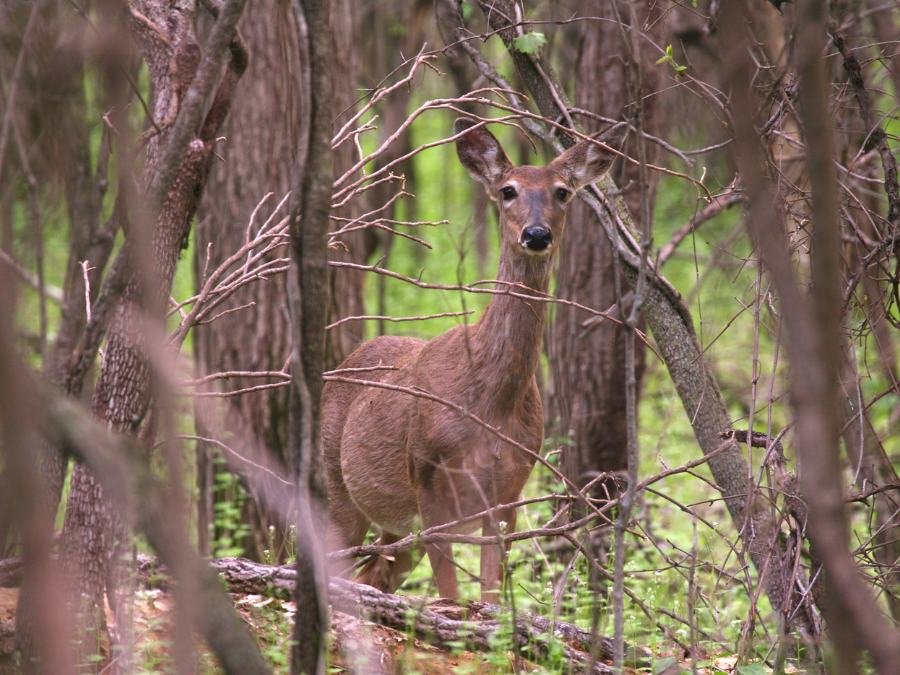
Land Mammals
Many mammal species call Hilton Head home, and can often be seen on or near the coast while kayaking. Whitetail deer are some of the most common, inhabiting local fields and forests. Mink and otter are common sightings in marsh areas, and occasional sightings of the elusive bobcat are also reported.
Bird Species
Hilton Head is a haven for birds, and a very popular place for bird watching. Over 300 species of birds have been spotted in the area. Some are year-round residents, while others stop over for part of the year on their annual migrations between various points north and south. Keep an eye out for these particularly majestic birds while kayaking on Hilton Head:
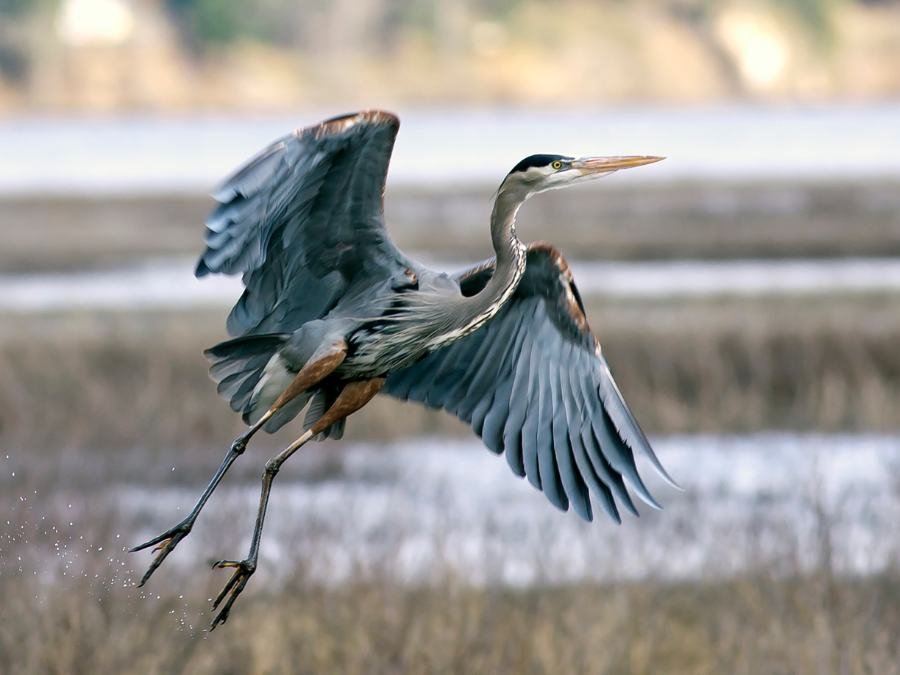
Great Blue Heron
Few Lowcountry birds are more iconic than the great blue heron. These large birds are right at home in the region’s wetlands, where they are often seen silently stalking fish, frogs, and crustaceans along the shoreline.
Kayaking is a great way to observe herons in their natural environment. The best way to get a good look is to approach slowly and quietly; great blue herons are known for swiftly taking off with an annoyed ‘honk’ when disturbed.
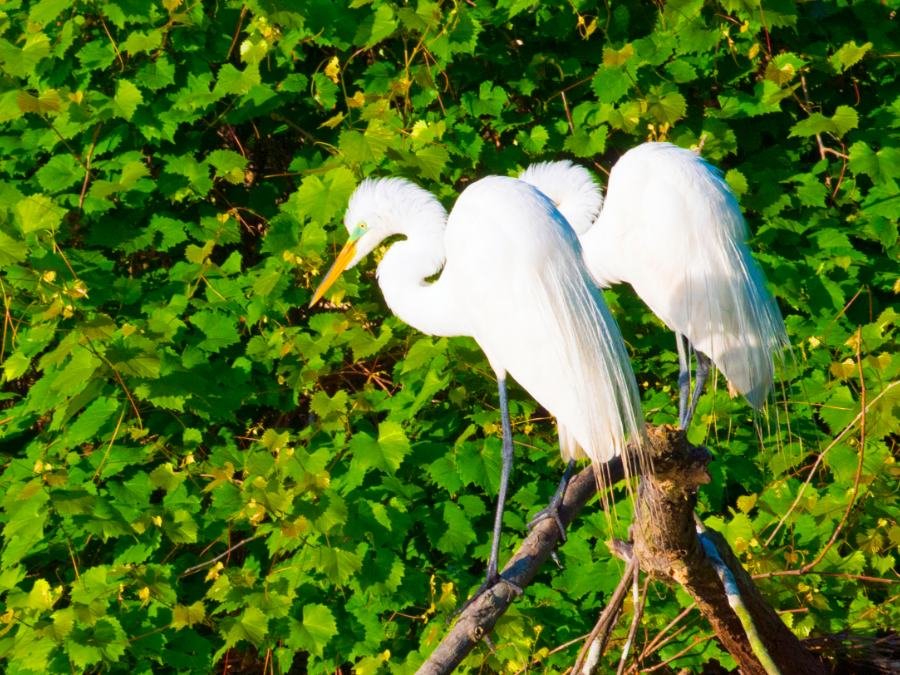
Egrets
Great egret and snowy egret are two of the most striking bird species commonly seen around Hilton Head. These graceful wading birds are known for their brilliant white plumage, and can be told apart from one another by a few key features.
Size is one major identifier, with snowy egrets being significantly smaller than great egrets. Snowy egrets also have black bills and yellow feet, while great egrets have yellow bills and black feet.
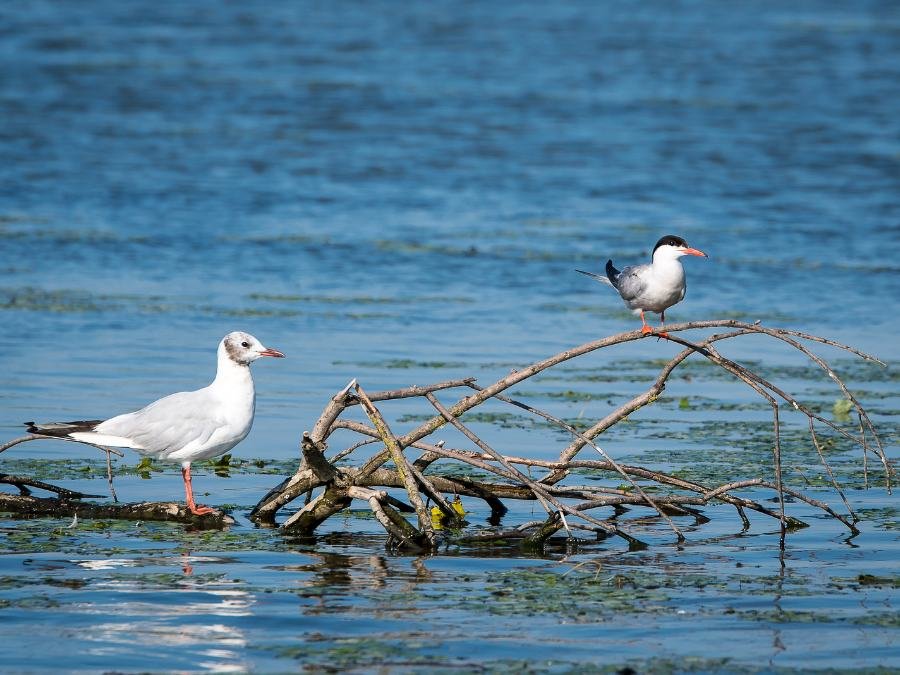
Gulls and Terns
Several species of gulls and terns spend all or part of the year on Hilton Head. Royal terns in particular are always a welcome sight with their vibrant orange bills and jet-black feather crests.
Bird watchers often spot Caspian tern, least tern, Forster’s tern, black tern, and common tern as well. All of these species are typically seen along beaches and wetland areas, as are South Carolina’s various gull species, which include laughing gull, herring gull, black-backed gull and ring-billed gull.

Osprey
With wingspans close to 6 feet, ospreys are large birds of prey that specialize in eating fish. That makes them right at home in South Carolina’s coastal salt marshes, where they nest every year (usually in early spring) and are often seen swooping down to snatch fish from the water.

Sandpiper
Typically seen in tight groups on our local beaches, sandpipers are shore birds known for chasing the waves up and down the beach as they snap up bugs and small crustaceans. Mostly migratory in South Carolina, sandpiper species (including sanderling and least sandpiper) are most often seen in spring and fall.

Bald Eagle
Though they are not common in the Hilton Head area, a small population of bald eagles nest here every year, and these iconic birds are always a welcome sight. The first eagles usually return to Hilton Head in August from summer haunts farther north, and they stay in the area until fledgelings leave the nest the following spring.
Posted by The Cobb Group on
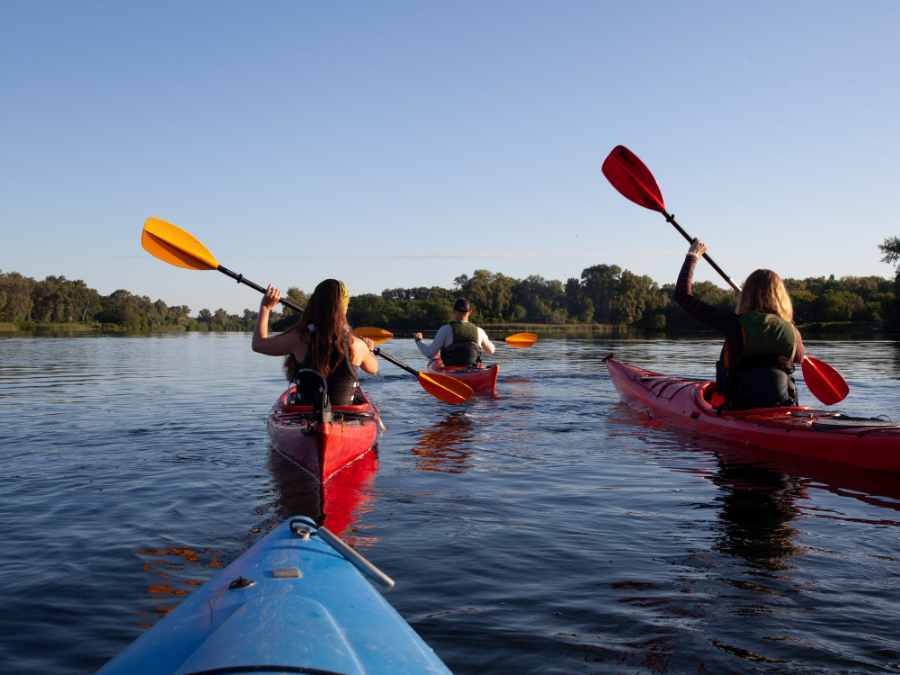
Leave A Comment